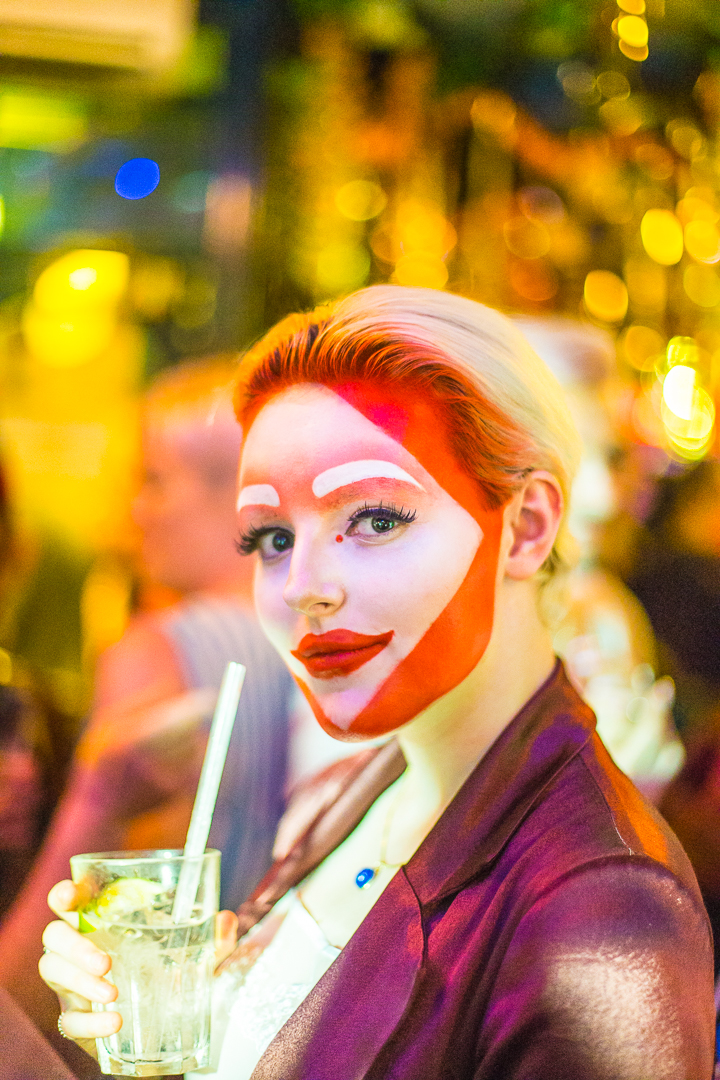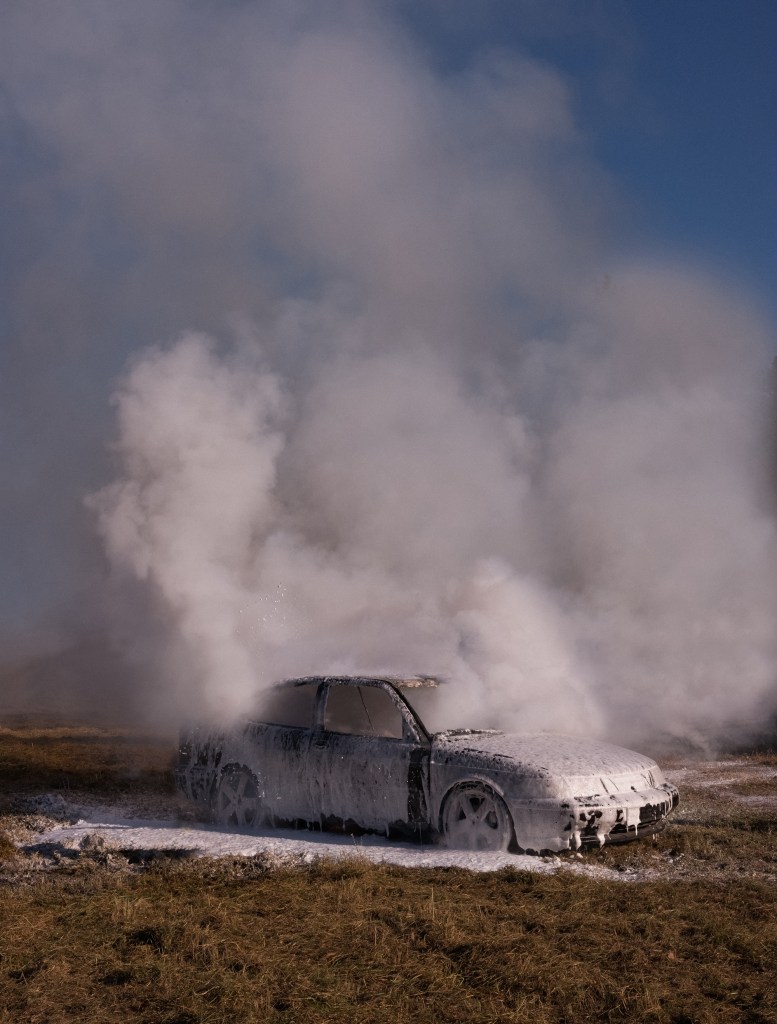French photographer Benoit Berthe Siward grew up in a traditional family that didn’t take too well his coming out in their quaint rural town in the Loire Valley. As a teen, he was forced into gay conversion therapy and grappled as an adult with the resulting internalised homophobia.
It was only after he moved to London at 24 and threw himself into its LGBTQ nightlife that he managed to shake off the shame and self-hatred he had grown up with. East London’s flamboyant drag scene offered him an alternative, life-affirming vision of queerness. Though queer clubs all over the country are facing an uncertain post-coronavirus future, Benoit’s extravagantly colourful portraits are a reminder that we still have much to celebrate this Pride.
Videos by VICE
VICE: Tell us a bit about your back story. Where are you from?
Benoit Berthe Siward: I am French, born and raised. When I was a baby, my parents moved our family from Paris, where I was born, to Gien – a lovely countryside town in heart of France known for its Châteaux of the Loire Valley, wine, hunting tradition, cheese tradition and its expensive old fashioned ceramics. Very French! This is where I grew up my entire child and teenage-hood.
How did you get to London?
In 2013, after six years studying art and cinema and after a Master’s in animation in France, a UK producer offered me an interesting position in London at my graduation. At that time, I wasn’t very familiar with London and was full of clichés about this city. I was pretty bad at English, too… But I fell in love with the city, the people and the wind of freedom and creativity that was in the capital. So I decided to leave France and move in London for a try. I was 24 – it’s been now more than six years.

When did you start taking pictures?
When I was 15, I fell in love with cinema and animation. My dream was to join a good cinema and animation school but the admission tests were very selective and difficult… I started to explore a wide range of techniques like photography. Unlike other artistic techniques I’d explored, photography gives you a lot of material to work with after pulling the trigger, in one shoot. It doesn’t take hours to have a result to judge. And you learn quicker.
I have continued practicing photography during my animation school studies. It has tremendously helped me, mainly because I did Computer Graphics studies, so understanding how a real camera works is really important because our digital tools virtually use the same principles… Drawing and making animation takes ages, it’s very liberating to pull the trigger and have an image in your camera ready to be edited.
I edit my pictures quite a lot, this process is directly inspired of the colour grading process we are doing in animation software. Using colour grading to enhance and reveal what is hiding in a photography fed my animation work as my animation work fed my photographical work.

What drew you to take portraits of drag performers in London?
I come from a quite traditional and religious background. My parents weren’t happy when I came out as a teenager. They brought me to gay conversion therapy to try to “cure me” of homosexuality. It was a painful experience that left me with stereotypes about homosexuality and an unconscious homophobia that I had to fight for some years. It’s not easy to emerge unscathed from being told for years that homosexuality is a sickness, a perversion.
The first time I was invited to a drag queen night was by the co-founder of Wut Club in east London… I took my camera with me to not feel alone. That way I had a role and knew what to do: taking pictures, which allowed me meet many creative people and drag queens. This process of meeting new people helped me a lot to get rid of all the misconceptions I was told when I was younger. It helped me to become more open minded and a better human being.

Tell us a bit more about your day time job, when you’re not photographing.
I have two mains job hats [in the] daytime. I am an animation filmmaker working in commercial and shorts in London. I also recently founded a strategy agency that advises animation companies and accompanies shorts to the Oscars. This year I have six films shortlisted for the Oscars, which keeps me very busy.
Do you have a favourite location to photograph in?
I have a particular love of photographing in east London, where I started to take drag queens’ portraits; more specifically The Glory, Dalston Superstore, or Kingsland Road by night with all the neon and colourful lights. The environment and lighting is really important for the final look I am looking for.

What do you normally look for when taking a portrait of someone?
To try to get the best result, I need amazing looks obviously, but also good and colourful lights! I take my shot without flash. I also need a nice background and vibe – and strong personalities. I do not direct the model, most of the pictures are taken without preparation sur le vif (Frence for “in the moment”) without much preparation. If they are aware of me taking the picture, I try to capture the natural first look and try to give the essence of who they are with or without the drag costume.
Do you see yourself getting back to photography again once your work calms down?
I would absolutely love to come back to those parties, meeting the drag queens and the people I love and admire so much – I miss them. I also miss the excitement of coming back home after a party without knowing what I’d captured – and the surprise after a restful sleep to discover the little gems that you can have.









